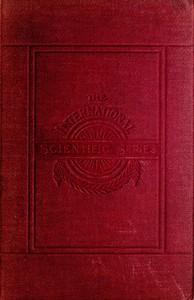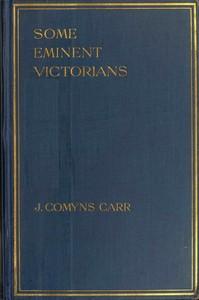|
|
Read this ebook for free! No credit card needed, absolutely nothing to pay.Words: 51991 in 16 pages
This is an ebook sharing website. You can read the uploaded ebooks for free here. No credit cards needed, nothing to pay. If you want to own a digital copy of the ebook, or want to read offline with your favorite ebook-reader, then you can choose to buy and download the ebook. The second form of the propyl derivative belongs to the rhombic system, and a similar rhombic form of the ethyl compound was once obtained, but lost again on attempting to recrystallise. These interesting relationships of the homologous methyl, ethyl, and propyl derivatives of triphenyl pyrrholone thus appear to form a connecting link between cases of isogonism or morphotropy and of true isomorphism. Now these two beautiful minerals are obviously analogous compounds of the same metal, silver, with the sulpho-acid of two elements, arsenic and antimony, belonging strictly to the same family group, the nitrogen-phosphorus group, of the periodic classification of the elements according to Mendele?ff. Consequently, they should be perfectly isomorphous. Miers has shown in a most complete manner that they are so, that they occur in very perfect crystals of similar habit belonging to the same class of the trigonal system, the ditrigonal polar class, both minerals being hemimorphic, that is, showing different forms at the two terminations, in accordance with the symmetry of the polar class of the trigonal system. But the angles of the two substances were not found to be identical, although constant for each compound within one minute of arc, there being slight but very real differences, which are very well typified by the principal angle in each case, that of the primary rhombohedron. In the case of proustite it is 72? 12?, while the rhombohedron angle of pyrargyrite is 71? 22?. The interval between the morphotropic work described in the last chapter and the present time has been remarkable for the completion of the geometrical and mathematical investigation, and the successful identification, of all the possible types of homogeneous structures possessing the essential attributes of crystals. It has now been definitely established that there are 230 such types of homogeneous structures possible, and the whole of them conform to the conditions of symmetry of one or other of the thirty-two classes of crystals. This fact is now thoroughly agreed upon by all the authorities who have made the subject their special study, and may truly be considered as fundamental. There has long been a consensus of opinion that the crystal edifice is built up of structural units which can be likened to the bricks or stone blocks of the builder, but which in the case of the crystal are so small as to be invisible even under the highest power of the microscope. The conceptions of their nature, however, have been almost as numerous as the investigators themselves, everyone who has thought over the subject forming his own particular ideas concerning them. We have had the "Mol?cules int?grantes" of Ha?y, the "Polyh?dres" of Bravais, the "Fundamentalbereich" of Sch?nflies, the "Parallelohedra" of von Fedorow, and the fourteen-walled cell, the "Tetrakaidecahedron" of Lord Kelvin, and again the "Polyhedra" of Pope and Barlow. Ideas have thus been extremely fertile, and indeed almost every variety of speculation has been indulged in as to the shape and nature of the unit of the structure which can exhibit such remarkable evidences of organisation and such extraordinary optical and other physical properties as those of a crystal. There is one inherent difficulty, however, which renders all such speculations more or less chimerical, until we know very much more as to the structure of the chemical atom, and the organisation of the corpuscles composing it. Such speculations, however, are deeply interesting, and the difficulty alluded to accounts largely for the great variety of conception possible. It is this, that the matter of the molecules, and again that of the atoms composing them, is not necessarily, nor even probably, continuous and in contact throughout, but that on the contrary the space which may legitimately be assigned to the unit of the structure is partly void. How much of this unit space is matter and how much is unoccupied, and how the one is related to the other as regards its position or distribution in space, we have yet no means of knowing, although there are signs that the day is not far distant when we shall know at least something concerning it. The recent brilliant work of Sir J. J. Thomson and his school of physicists has rendered it clear that the chemical atom is composed of cycles of electronic corpuscles, the orbital motions of which determine its boundaries. In this condition of our knowledge obviously the only safe course is to consider each atom of the chemical molecule as occupying a "sphere of influence," within the limits of which the material parts of the atom, the corpuscles in organised motion, are confined. The "Fundamentalbereich" of Sch?nflies and the "Sphere of Influence" of Barlow, are the conceptions which in all probability have the greatest value in the present state of our knowledge, and if we adopt the latter we shall not be committing ourselves to anything more than the experimental facts fully warrant. It may be quite definitely stated, however, that there is a considerable amount of experimental evidence that the unit of the space-lattice of the crystal structure is certainly not more complex than the chemical molecule, the idea of an aggregation of chemical molecules to form a "physical molecule" acting as a structural unit having proved to be a misleading myth. Fortunately, however, there is no necessity whatever to introduce the subject of the actual shape of the unit, and the greatest progress has been effected by disregarding it altogether, and agreeing to the representation of the unit by a point. This leads us at once to perceive the importance of the brilliant work of the geometricians, who have now completed their theory of the homogeneous partitioning of space into point-systems possible to crystals, the structural units of the latter being regarded as points. The investigations extend from those of Frankenheim in the year 1830 to the finishing touches given by Barlow in 1894, and prominently standing forth as those of the greatest contributors to the subject, besides the two investigators just mentioned, are the names of Bravais, Sohncke, Sch?nflies and von Fedorow. Bravais, perfecting the work of his predecessor Frankenheim, made us acquainted with the fourteen fundamentally important space-lattices, or same-ways orientated arrangements of points. If we regard each chemical molecule as represented by a point, disregarding the separate atoms of which it is composed, then these fourteen space-lattices represent the possible arrangements of the molecules in the crystal in all the simpler cases; three of these lattices have cubic symmetry; the tetragonal, hexagonal, trigonal, rhombic and monoclinic systems claim two space-lattices each; while one space-lattice conforms to the lack of symmetry of the triclinic system. The fourteen space-lattices of Bravais thus represent the arrangement of the chemical molecules in the crystal, and determine the systematic symmetry. The points being taken absolutely analogously in all the molecules, and the whole assemblage being homogeneous, that is, such that the environment about any one spot is the same as about every other, the arrangement is obviously a same-ways orientated one, the molecules being all arranged parallel-wise to each other. But the fact that the structure is that of a space-lattice also causes the crystal to obey the law of rational indices. To enable us to see how this comes about it is only necessary to regard a space-lattice. In Fig. 59 is represented the general form of space-lattice, that which corresponds to triclinic symmetry. It is obviously built up of parallelepipeda, the edges of which are proportional to the lengths of the three triclinic axes, and their mutual inclinations are those of the latter. As we may take our representative point anywhere in the molecule, so long as the position chosen is the same for all the molecules of the assemblage, we may imagine the points occupying the centres of the parallelepipeda instead of the corners if we choose, for that would only be equivalent to moving the whole space-lattice slightly parallel to itself. Hence, each cell may be regarded as the habitat of the chemical molecule. Free books android app tbrJar TBR JAR Read Free books online gutenberg More posts by @FreeBooks
: Some eminent Victorians: Personal recollections in the world of art and letters by Carr J Comyns Joseph Comyns - English literature 19th century; Great Britain Intellectual life 19th century; Art Victorian@FreeBooksThu 08 Jun, 2023
|
Terms of Use Stock Market News! © gutenberg.org.in2025 All Rights reserved.






